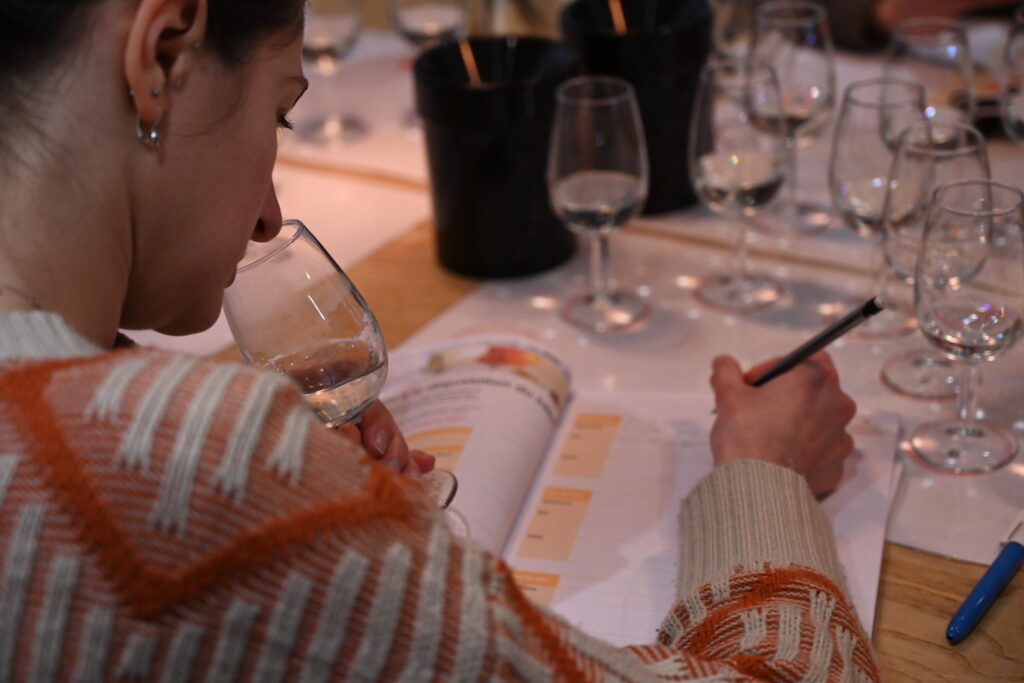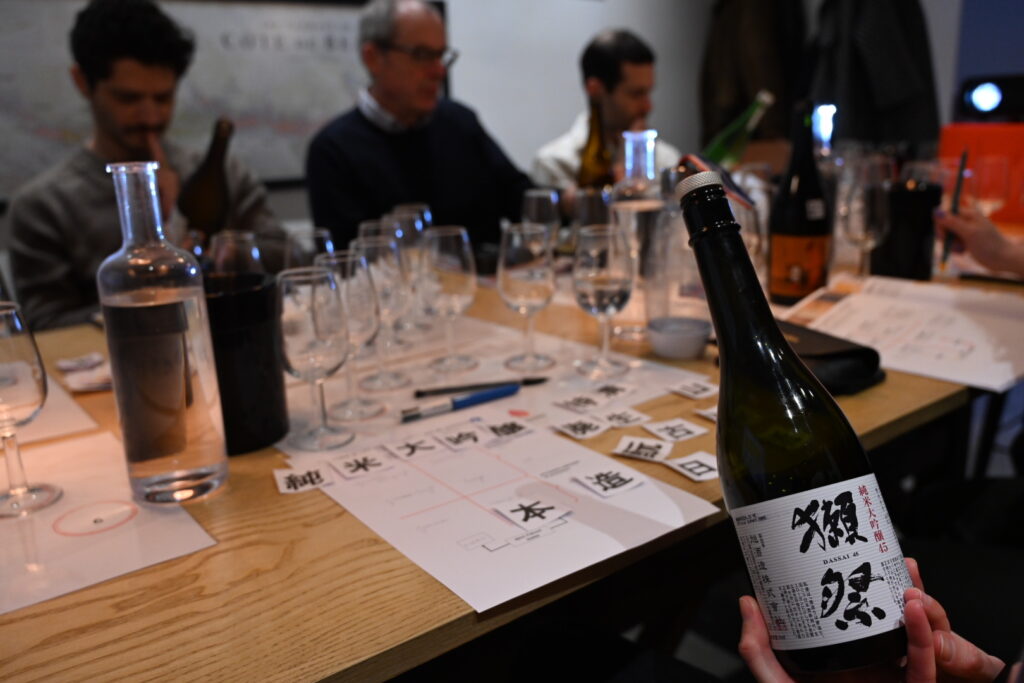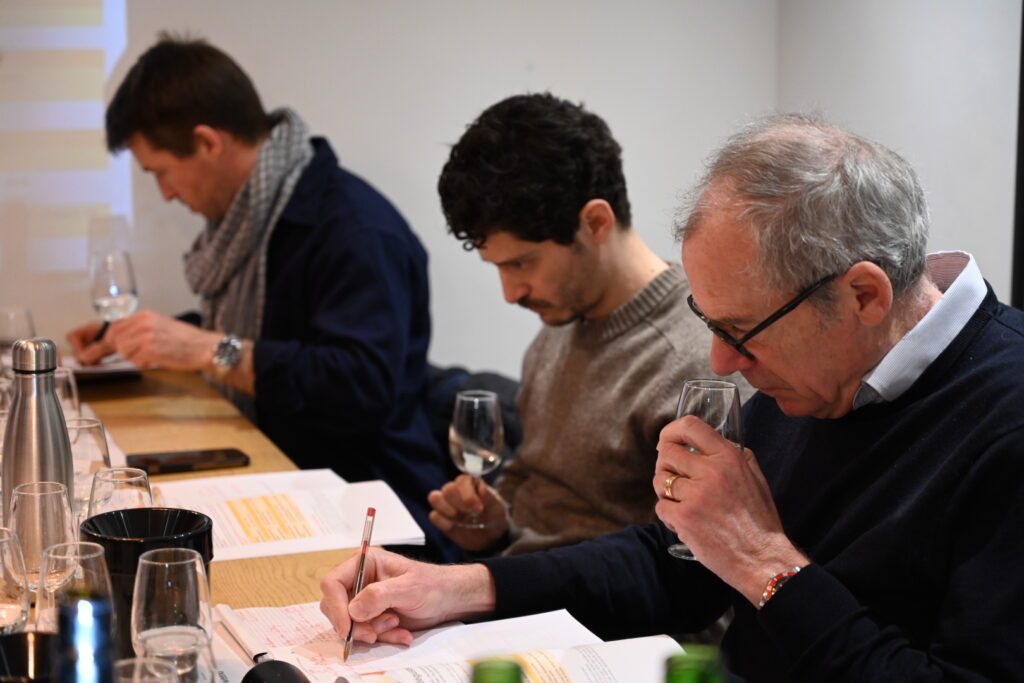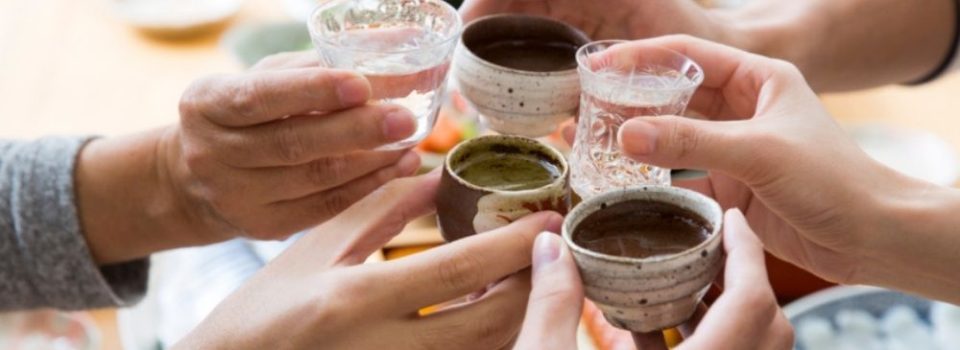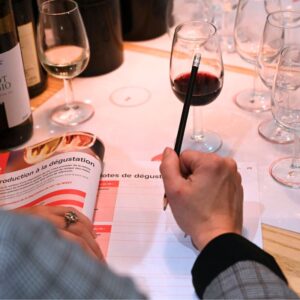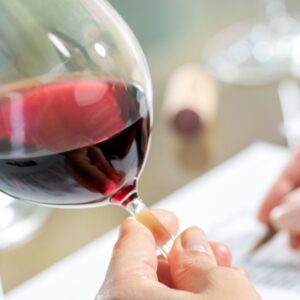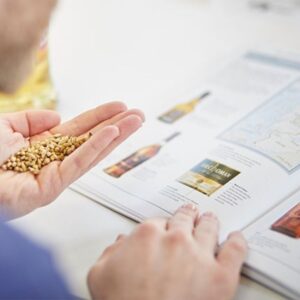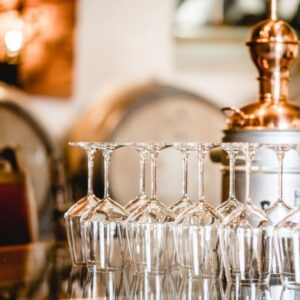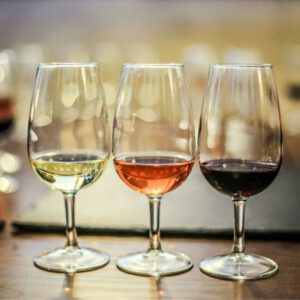A Fascination That Crosses Borders
Over the past few years, a wave from Japan has been sweeping across the French gastronomic scene. Manga, tea ceremony, wabi-sabi, minimalism…
The Land of the Rising Sun is inspiring more and more French people — far beyond the usual circles of Japan enthusiasts. And at the heart of this fascination lies a traditional product that’s gaining serious attention: Japanese sake.
Long misunderstood or mistaken for a strong spirit, sake is now experiencing a genuine rise in recognition in France. Sommeliers, chefs, wine merchants and curious connoisseurs are rediscovering a drink with unexpected depth — one that’s much closer to wine than vodka.
But why is Japanese sake generating so much interest?
What are the different styles of sake, and how can they be paired with Japanese or French cuisine? What does this trend reveal about our evolving relationship to taste, tradition and quality?
In this article, we’ll explore the reasons behind this growing enthusiasm, the key sake categories to know, pairing ideas with both Japanese and French dishes, and how to deepen your knowledge through certifications like the WSET Sake offered by Weeno, a leading training school in wine, spirits and sake.
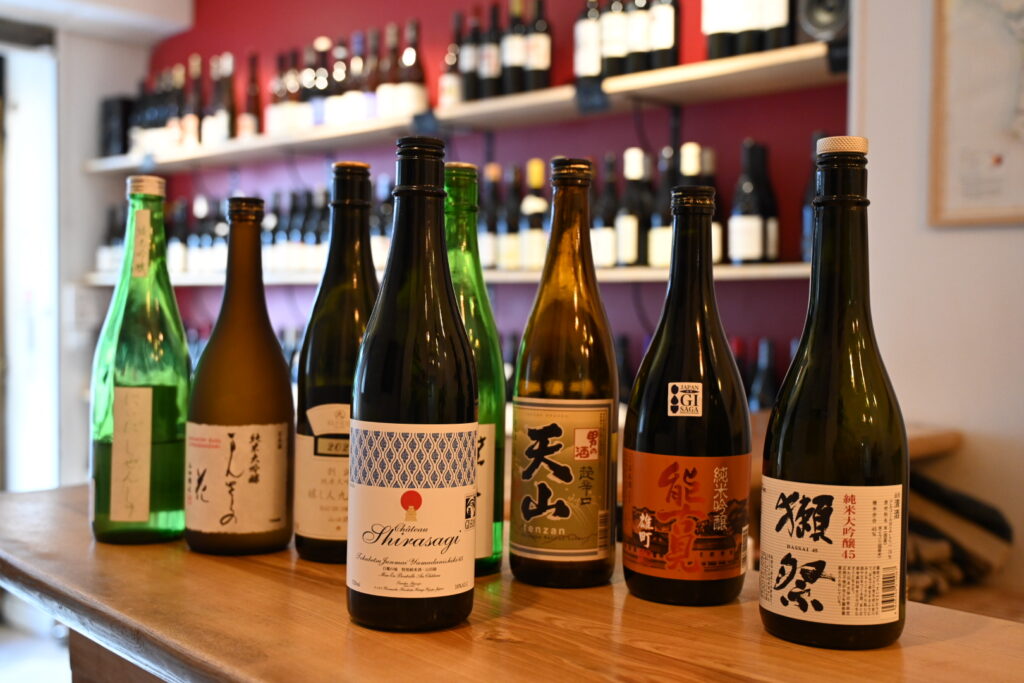
1. A French Passion for Japan That Goes Beyond a Trend
The growing enthusiasm for Japanese sake in France isn’t random — it’s part of a much deeper fascination with Japanese culture.
Manga: A Generational Gateway
Since the 1980s, manga and anime have opened the door to Japanese culture for millions of French people, fueling the imagination of multiple generations — from Dragon Ball and Sailor Moon, to Naruto, One Piece, and more recently Demon Slayer.
This strong emotional connection sparked a broader curiosity for Japan’s traditions, aesthetics, and way of life — which have become a lasting cultural movement.
Yesterday’s manga fans have become today’s foodies.
They travel, explore Asian cuisine… and are more than ready to be surprised by lesser-known beverages like sake.
Japanese Cuisine Is Booming in France
Today, Japanese food is thriving across France and has become part of the national culinary landscape:
- Sushi bars, vegetarian bentos, ramen shops, izakayas and omakase restaurants are multiplying in Paris, Lyon, Marseille, and other major cities
- Fusion concepts and Franco-Japanese chefs are gaining recognition
- Japanese premium products are more available in gourmet stores
This boom goes hand in hand with a growing demand for quality and refinement — two values deeply rooted in Japanese gastronomy and perfectly embodied by sake.
The Japanese Art of Living: Precision, Elegance, Simplicity
Beyond cuisine, sake represents a way of life:
- Elegance, discretion, precision
- Respect for the seasons and ingredients
- Refined rituals and minimalist aesthetics
Sobriety, discipline, the beauty of simple things — Japanese aesthetics resonate with a growing number of French consumers seeking meaning, calm and authenticity.
In this context, Japanese sake is seen as a symbol of quiet excellence: refined, subtle, demanding — it reflects a unique connection to time, nature, and restrained emotion.
This deeply appeals to French sensibilities, especially those who value quality, craft and gastronomy.
Experts and Influencers Leading the Way
Many professionals and sake ambassadors are shaping this new narrative in France:
- Maryam Masure (@atelierdusake) – Certified sake sommelier and passionate educator, she runs workshops and tastings for both professionals and consumers across France.
- Xavier Thuizat (@xavierthuizat) – Meilleur Sommelier de France and President of the Kura Master competition (kuramaster.com), he describes sake as having “the complexity of wine, the purity of water, and the finesse of a great Japanese vintage.”
- Sylvain Huet, aka Madame Saké (madamesake.com) – A pioneer of sake culture in France, he founded the Salon du Saké in Paris and played a major role in positioning sake as a true gastronomic beverage.
- The Sake News (@thesakenews) – A growing Instagram account that targets curious 24–35-year-olds with educational content and curated sake picks.
- Sake in Paris (@sakeinparis) – Focused on tastings and sake discovery experiences in the French capital.
- Sake Sommelier Association (sakesommelieracademy.com) – The first international organization dedicated to sake education, founded in London in 2000 by Xavier Chapelou and Regine Lee.
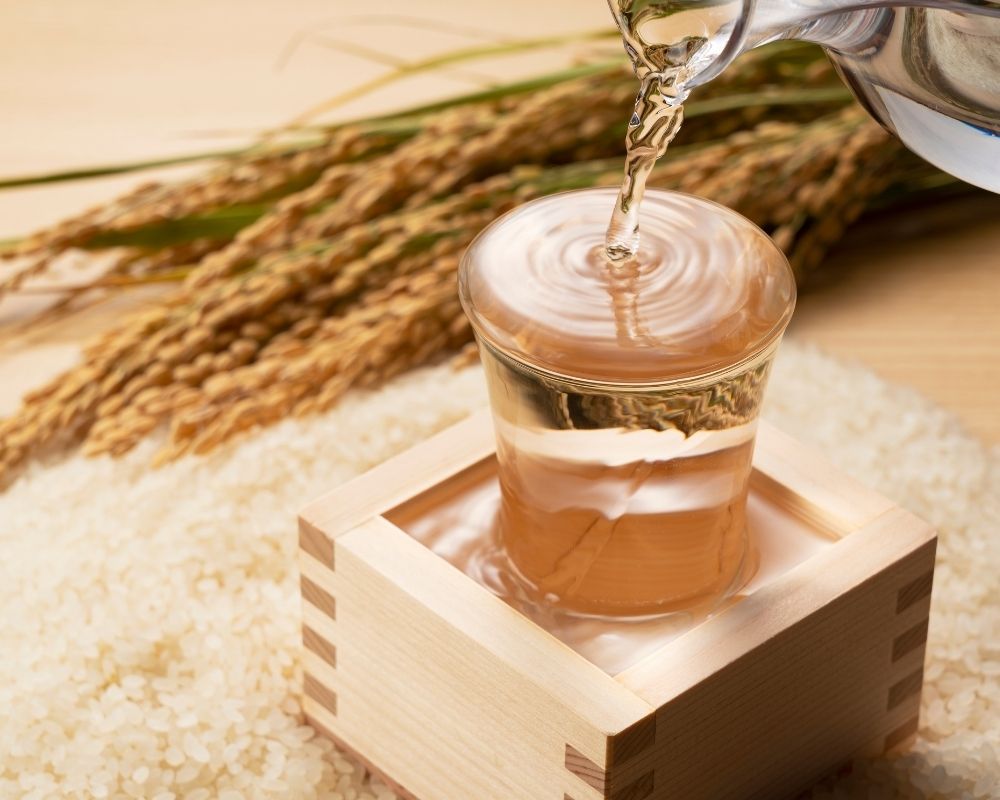
A Premium Product in the Making
Japanese sake is now shifting towards a premium positioning in the French market:
- Artisanal Japanese breweries are increasingly imported
- Sake is served by the glass in Michelin-starred restaurants
- Elegant packaging and rich storytelling build strong emotional appeal
- High-end Junmai Daiginjo sakes can reach luxury price points
Several specialized online stores have emerged to meet this growing demand:
- Midorinoshima (midorinoshima.com) – A French pioneer in sake imports, founded in 2006, offering a wide range of high-quality Japanese alcohols and cultural goods.
- WeWantSake (wewantsake.com) – A modern online shop with clear educational content and a diverse sake selection, from Junmai to aged or sparkling styles.
- La Maison du Saké (lamaisondusake.com) – A flagship venue in Paris for sake lovers, offering curated tastings, rare bottles, and an immersive experience.
- Wakaze (wakaze-sake.com) – An innovative Franco-Japanese brewery producing sake near Paris with French ingredients (like Camargue rice). Their product line includes classic sakes, citrus-infused editions, and barrel-aged experiments — paired with Japanese dishes in their own restaurant.
Just like wine or whisky, sake is becoming a connoisseur’s drink — elegant, rare, and deeply cultural.
2. Sake: A Noble, Complex Product… Still Widely Misunderstood
If Japanese sake is now captivating the most refined French palates, it’s because it offers far more than the tired cliché of a “strong hot liquor served at the end of an Asian meal.”
This misconception — often based on low-quality sake served in fast-food restaurants — is gradually giving way to a more accurate understanding of what nihonshu, the authentic Japanese sake, truly is.
A Fermented Beverage Like Wine or Beer
Contrary to popular belief, sake is not a spirit. It’s a fermented drink made from rice, water, yeast, and kōji-kin — a microscopic fungus that breaks down rice starch into sugar, allowing fermentation to occur.
With an alcohol content ranging from 12% to 17%, sake is much closer to wine than whisky — both in its production process and its role at the dining table.
Like wine, it’s typically served in a glass, at room temperature or slightly chilled depending on the style.
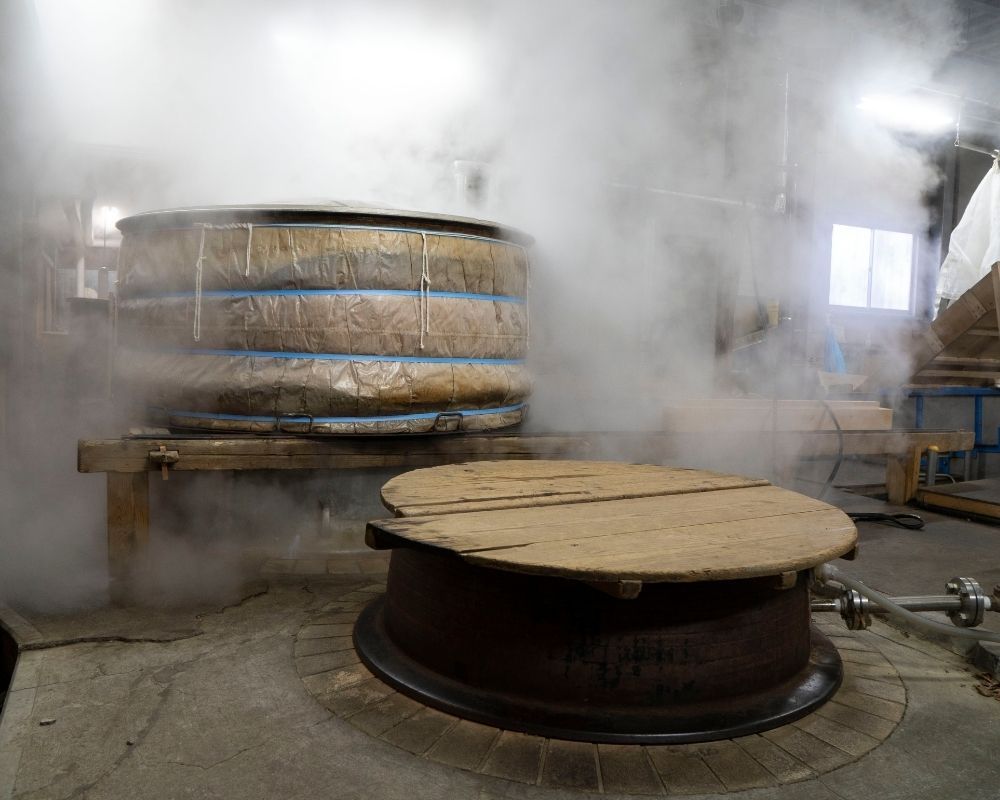
An Exceptionally Diverse Range of Styles
Just like French wines, the flavor and character of Japanese sake vary depending on the region, the brewer’s expertise, the type of rice used, and the degree of rice polishing (seimaibuai).
Here are the main sake categories, as taught in our WSET Sake courses:
- Junmai: Pure sake with no added alcohol, often more structured and rich in umami.
- Honjozo: A small amount of alcohol is added to extract aromas, resulting in a lighter and more approachable style.
- Ginjo / Junmai Ginjo: More aromatic sakes, with elegant floral or fruity notes.
- Daiginjo / Junmai Daiginjo: The pinnacle of refinement — made with highly polished rice (at least 50% removed), offering delicate and complex expressions.
- Nigori: Unfiltered and slightly cloudy sake, with a sweet and creamy texture.
- Sparkling Sake: Lightly bubbly and perfect as an aperitif.
Each style evokes different sensations — freshness, purity, texture, complexity, or softness — much like a crisp Sauvignon Blanc, a buttery Chardonnay, or a vintage Champagne.
A High-End Gastronomic Pairing Partner
Japanese sake offers a unique versatility when it comes to food pairings — including with many classic French dishes.
Why?
Because it is:
- Low in acidity, making it less likely to clash with delicate ingredients (like eggs or creamy sauces),
- Rich in umami, the “fifth taste” also found in slow-cooked dishes, mushrooms, and aged cheeses,
- And clean and silky on the palate, allowing the ingredients in the dish to shine without overpowering them.
That’s exactly why more and more French sommeliers are adding sake to their wine lists — often pairing it with their signature dishes to create a memorable experience for their guests.
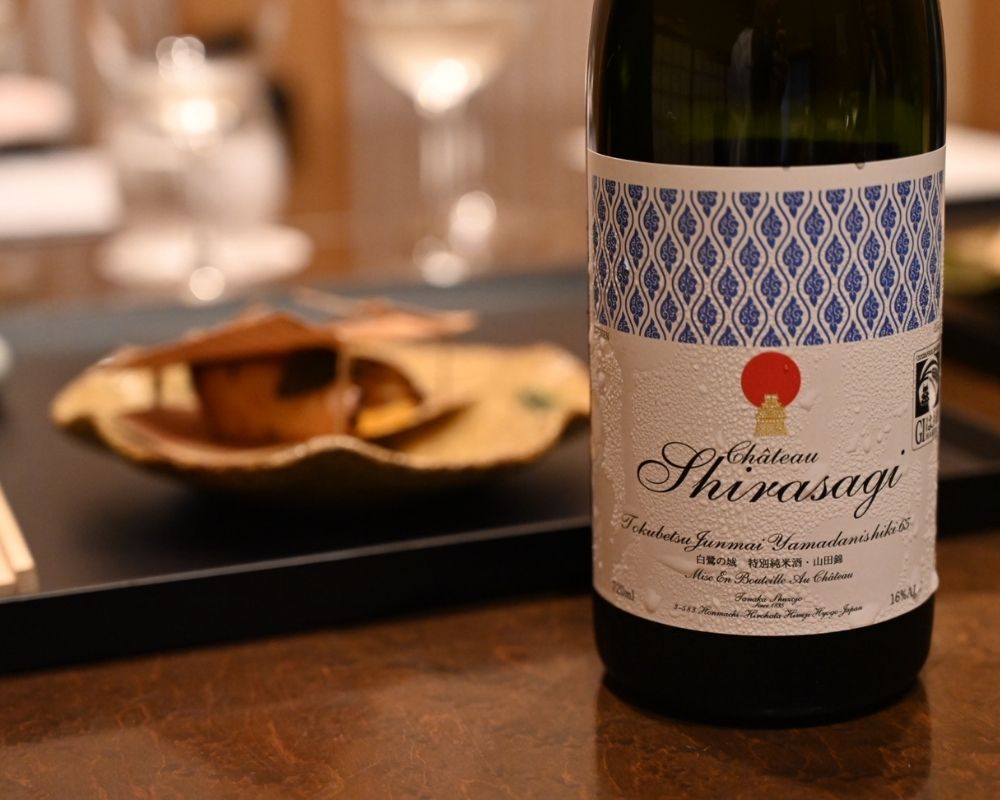
3. Surprising (and Delicious) Franco-Japanese Sake Pairings
Japanese sake is gradually making its mark in France not only for its cultural appeal, but also for its unique ability to bridge Japanese and French gastronomy.
Once confined to sushi restaurants, sake is now making appearances in Parisian bistros, Michelin-starred kitchens, and even on cheese boards.
With Japanese Cuisine: A Natural Fit
Traditional pairings with Japanese dishes are intuitive — sake and Japanese food share the same core values of purity, umami, and balance.
Here are some classic combinations:
- Salmon nigiri + Junmai Daiginjo: The melt-in-the-mouth texture of raw fish is elevated by the refined structure of this high-grade sake.
- Vegetable tempura + Ginjo: The crisp lightness of the sake balances the richness of the deep-frying.
- Miso soup or slow-cooked dishes + Junmai: The umami in both the food and the sake enhances the depth and comfort of the meal.
But where things get really exciting… is in French cuisine.
With French Cuisine: A Revelation for Chefs
Forward-thinking sommeliers have discovered that sake often works where wine can fall short.
Some unexpected — yet successful — pairings include:
- Aged cheeses (Comté, Parmesan, goat cheese) + Junmai or Honjozo: The umami in the sake amplifies the savory notes in the cheese without clashing like a tannic wine might.
- Lobster, scallops, or fish in creamy sauces + Daiginjo: The sake’s elegance highlights the delicate textures.
- Roasted poultry or veal + Junmai Ginjo: A balance of structure and finesse to match richer French dishes.
- Stone fruit desserts (apricot, peach, mango) + Nigori or sweet sake: A harmony of sweetness and texture that complements dessert without overwhelming it.
📝 Want more food pairing ideas for spring and summer?
Check out our seasonal guide: Best Spring/Summer Wine & Food Pairings
A New Playground for Sommeliers
Sommeliers such as Xavier Thuizat (Best Sommelier of France 2022) and Manuel Peyrondet (Best Sommelier of France 2008 & Meilleur Ouvrier de France) are actively promoting the use of sake in high-end French dining.
Both passionate about Japan (Thuizat is married to a Japanese woman), they champion daring pairings like:
- Seared foie gras + aged Junmai
- Sweetbreads + aged sake (koshu)
- Grilled brioche + lightly sparkling sweet sake
These combinations do two powerful things:
- They surprise and delight guests.
- They elevate sake as a sophisticated pairing option — a drink still unfamiliar to many, but one with immense culinary potential.
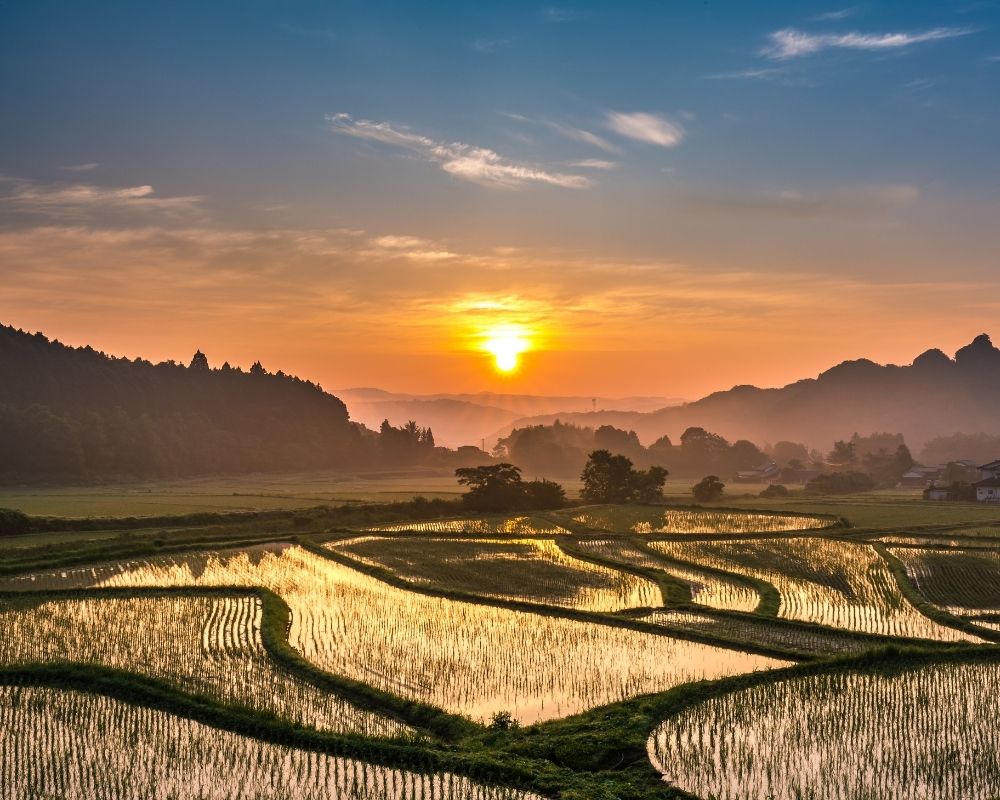
4. Discovering Sake at the Source: Travel, Terroirs, and Iconic Kura in Japan
For many French enthusiasts, the love of sake begins in Japan.
During a trip, visitors often discover that sake is far more than a hot, strong beverage served at the end of an Asian meal.
They learn that sake is, in fact, a true terroir product, deeply connected to the purity of the water, the variety of rice, the climate, and the craftsmanship of local brewers — much like fine wine.
Hyogo, Niigata and the Great Sake Regions of Japan
Two key regions attract sake lovers looking for authenticity and excellence:
- Hyogo Prefecture, near Kyoto, is home to some of the most prestigious sake breweries in Japan. It’s also where the famous Yamada Nishiki rice — considered the best for premium sake — is grown.
- Niigata, located in the Japanese Alps, is renowned for its snowy winters, crystal-clear meltwater, and elegant, dry sakes. The region is a favorite for those who appreciate clean, structured, and food-friendly sake styles.
Three Must-Visit Kura (Sake Breweries)
🍶 Dassai – Asahi Shuzo
👉 Website
Internationally acclaimed, Dassai has helped modernize the image of sake while maintaining an exceptional level of craftsmanship.
The brewery exclusively produces Junmai Daiginjo, the highest category of sake, focusing on purity, precision, and innovation. A must-visit to experience the future of Japanese sake excellence.
🍶 Kuheiji – Banjo Jozo Brewery
👉 Website
A smaller, more artisanal kura with a deep connection to Burgundy: the brewers also own vineyards in Côte de Nuits.
Kuheiji’s sakes are known for their refinement, balance, and elegance, embodying a rare fusion of Japanese tradition and French viticultural influence.
🍶 Tamagawa – Kinoshita Shuzo
👉 Website
Located by the sea in the Kyotango Peninsula, Tamagawa stands out with its striking label designs (created by a Japanese artist) and its bold, often unpasteurized and aged sakes.
These expressive, full-bodied brews offer a sensory journey like no other — inspiring wanderlust and deep appreciation with every sip.
Sake: A New Sensory Destination for French Travelers
For many visitors — whether professionals or curious food lovers — these immersive experiences are a turning point.
Visiting a kura, smelling the aroma of freshly steamed rice, watching the koji develop, or speaking with a toji (master brewer) adds depth and dimension to every sip.
Tasting freshly pressed sake on site, still alive and vibrant, can transform one’s entire understanding of what sake is.
More than a drink, sake becomes a cultural bridge between Japan and France — a personal, sensory, and emotional journey.
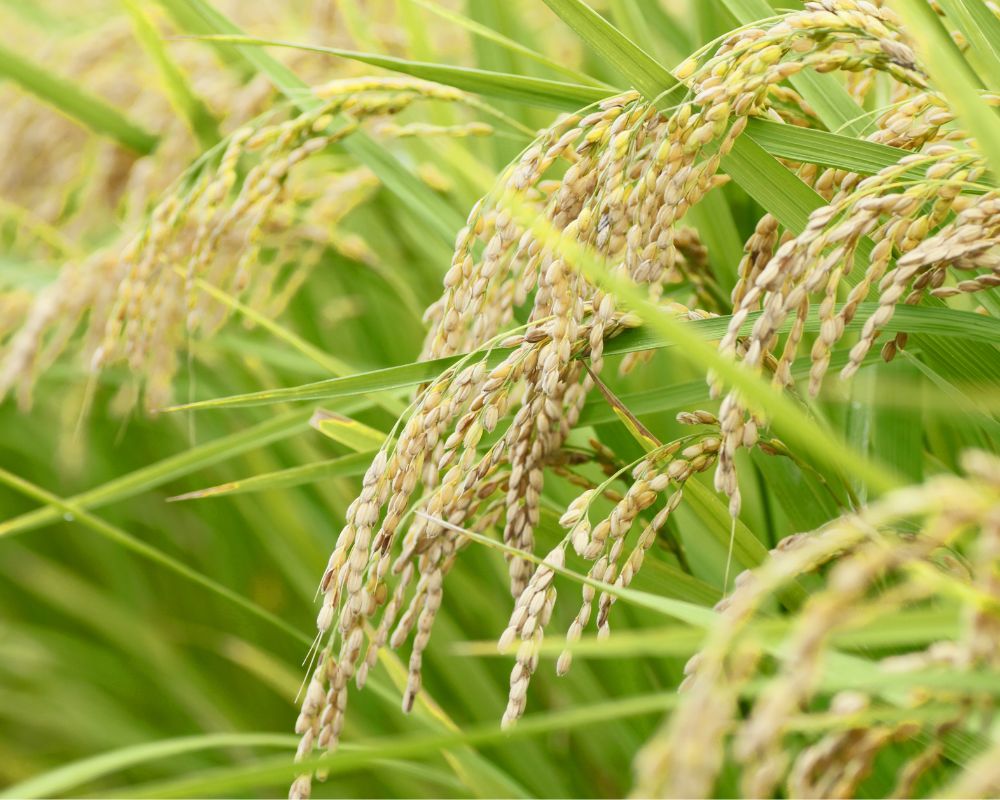
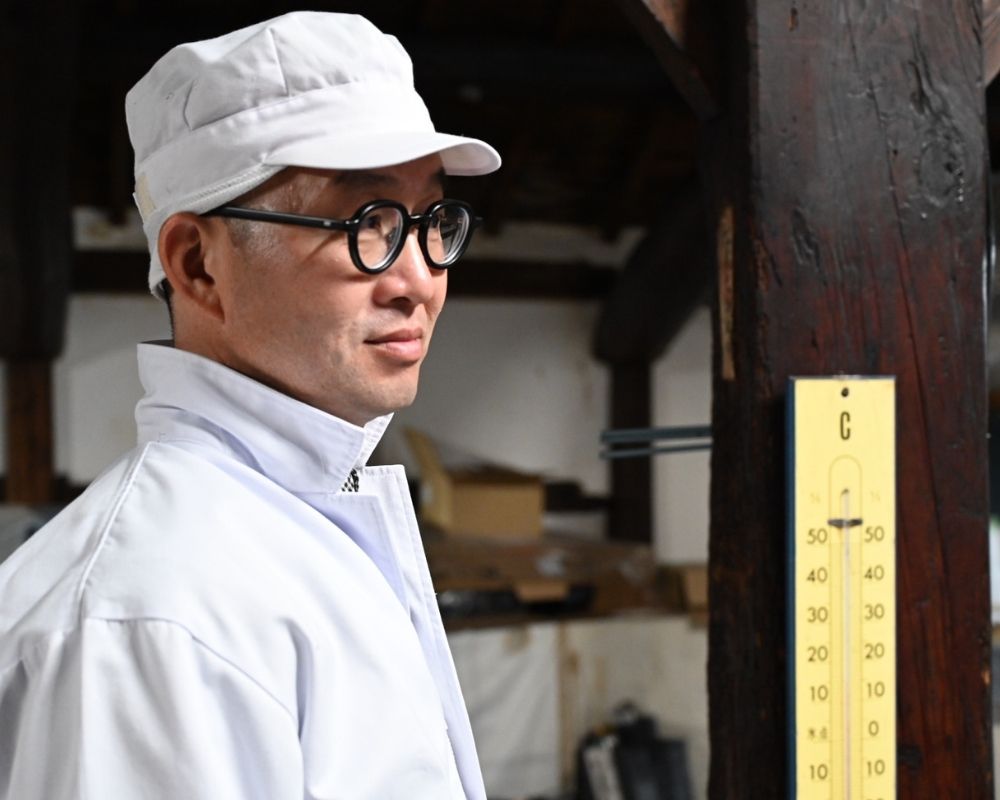
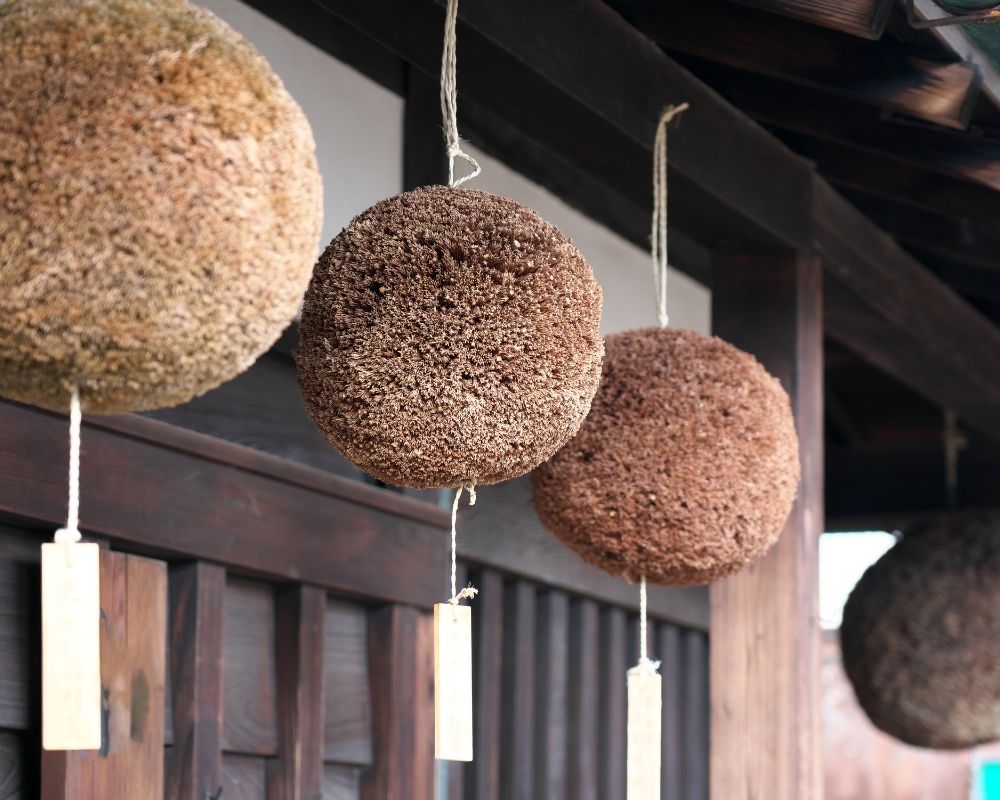
5. A Lasting Enthusiasm Driven by Curiosity and Transmission
Far from being just a passing trend, the growing interest of the French public in Japanese sake reflects a deeper cultural shift.
Sake is no longer seen as an “exotic” or “foreign” drink, but as a genuine artisanal, cultural, and gastronomic product.
French consumers are now exploring:
- New textures and aromas
- Different food pairings
- A more nuanced understanding of harmony between food and beverage
Professionals — sommeliers, wine merchants, restaurateurs — are increasingly trained to speak about sake with accuracy, passion, and educational clarity.
And thanks to influential figures such as Xavier Thuizat, Meilleur Sommelier de France 2023 and leading sake ambassador, this age-old beverage is finally finding its rightful place on the tables of French haute cuisine.
Ready to Deepen Your Knowledge of Sake?
At Weeno, we believe that Japanese sake belongs at the heart of professional wine and beverage training — and that curious enthusiasts also deserve access to quality education.
That’s why we offer:
✅ WSET Level 1 Award in Sake — available online or in person in Marseille and Paris
✅ A structured, beginner-friendly course recognized in over 70 countries
✅ Clear, expert-led teaching, guided tastings, and rich course materials
✅ A concrete, skill-building journey — whether you’re new to sake or already a connoisseur
👉 Explore our upcoming course sessions and dive into the fascinating world of sake with clarity, pleasure, and expertise:
https://weenodrinksacademy.com/wset/wset-en-sake/
